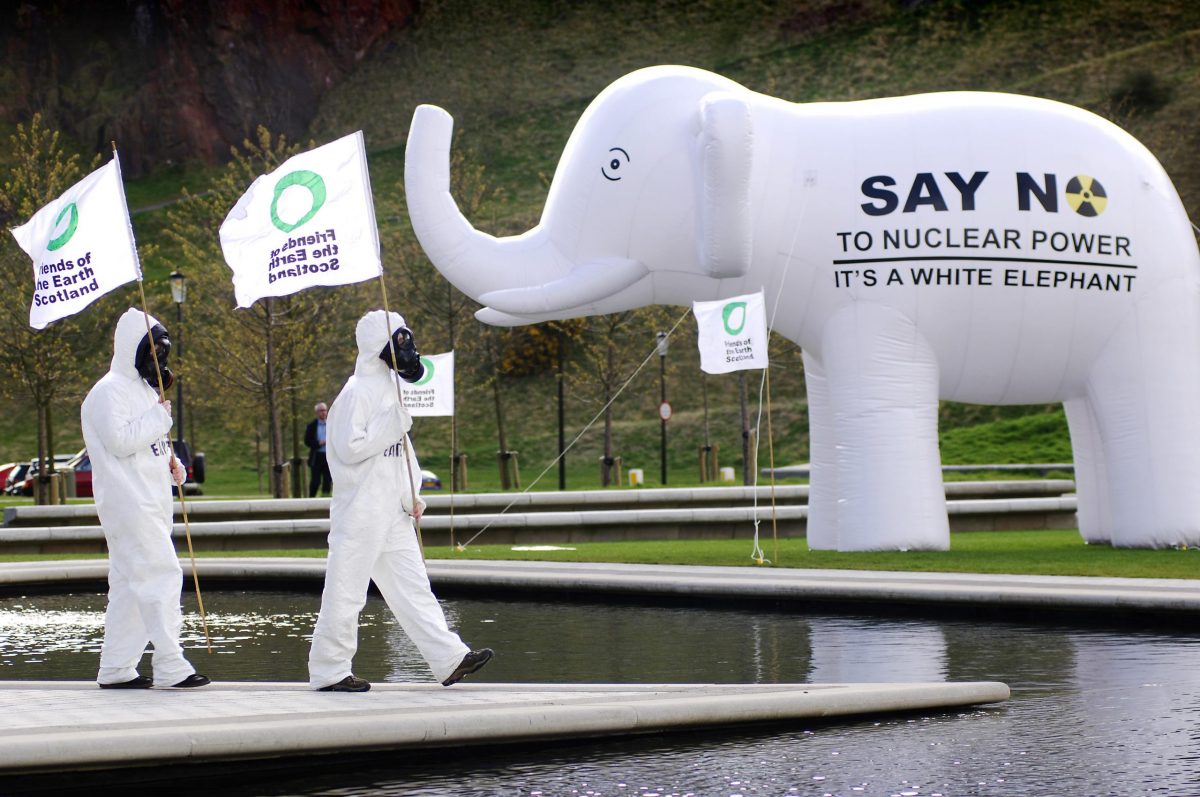
The latest nuclear con
The final shut down of reactor number 4 at Hunterston and the announcement the two reactors at Torness will shut down in 2028, has led the nuclear enthusiasts to talk even more about Small Modular Reactors.
Meanwhile construction of the new reactors at Hinkley continue to run massively behind schedule and over budget and all but one of the possible new nuclear station proposal in the UK have been abandoned by their proposers. The UK Government has just passed a new law to make bill payers subsidise nuclear, even though renewables are much cheaper.
The closure of Hunterston is an historic step on our journey to safe energy, having closed both of our coal fired stations and massively built up electricity from renewables to the point where it create the equivalent of almost all the electricity used in Scotland last year.
‘Small’ reactors are size of two football pitches
Given the difficulty of building big reactors the industry has come up with the idea of Small Modular Reactors. Sounds like something that comes on the back of a truck but the ones Rolls Royce are thinking of would fill an area the size of two football pitches. The proponents claim they will be cheap, at £2bn each.
Even if you were not worried about creating yet more radioactive waste for which we have no long-term storage solution and the £132bn public-money bill for decommissioning and you were not worried about terrorists blowing up reactors or just the likely delays and cost over-runs, these small(ish) reactors still aren’t likely to become a reality.
Firstly you would need there to be a very large number of orders to keep the price low. There is no evidence that anyone is enthusiastic about buying them. Secondly you would have to get them through planning. The costs for these new reactors are based on making some productive use of the heat from the reactors.
What about the heat generated?
Nuclear power stations are very different from coal-fired stations in how they make heat, but pretty much the same when it comes to using that heat to make steam to turn turbines to make electricity, with the spare heat needing to be disposed of. There is nearly twice as much energy in the heat as in the electricity produced and it is entirely wasted.
Inland power station use cooling towers but most power stations are on the coast so they can use seawater to deal with their waste heat. The resulting plume of warm water attracts marine organisms, leading to such remarkable and recurring headlines as ‘jelly fish shut down nuclear power station’ when they clog the water inlet.
Getting someone to pay you for the waste heat generated by a reactor would mean siting them near big users of heat, like hospitals, factories or housing estates, that is, near people. Can you imagine the outcry, the protest and the almighty planning fight when a nuclear reactor is proposed at the end of your street or next to your local hospital?
Small Modular Reactors are the latest con from the nuclear industry. They aren’t small, they won’t be cheap and they will be so unpopular in practice that it is unlikely any of them will actually get built.
Dr Richard Dixon is Director of Friends of the Earth Scotland. A version of this article appeared in The Scotsman on Thursday 20 January 2022.
